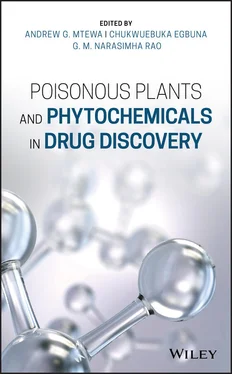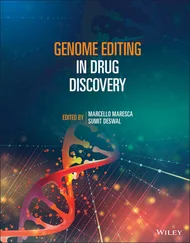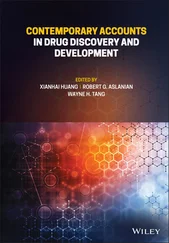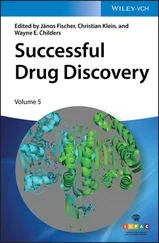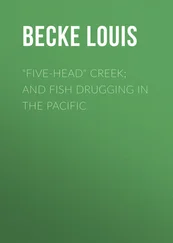3 Chapter 7Table 7.1 Some other classes of phytochemicals possessing sedative–hypnotic a...Table 7.2 Plants with reported sedative actions.
4 Chapter 8Table 8.1 Bioactive compounds of edible mushroom species.Table 8.2 Bioactive compounds of non‐edible mushroom species.
5 Chapter 9Table 9.1 Globally Harmonized System of Classification and Labelling of Chemi...Table 9.2 Draize irritation potential classification [51, 54].
6 Chapter 12Table 12.1 Effects of heavy metals on the human body.
7 Chapter 13Table 13.1 Medicinal plants that inhibit snake venom effects.
8 Chapter 14Table 14.1 Phytochemicals used in the synthesis of nanoparticles.
9 Chapter 15Table 15.1 Some selected examples of well‐known herbal remedies traditionally...
10 Chapter 16Table 16.1 Common phytotoxins present in plant families.Table 16.2 Classic examples of methods used to detect phytotoxins.
11 Chapter 18Table 18.1 Workflow involved when designing in silico toxicity prediction mod...
1 Chapter 6Figure 6.1 Penetration of sulfur mustard (HD) into skin through hair follicl...Figure 6.2 Skin exposure to sulfur mustard (HD).Figure 6.3 Adverse effects of sulfur mustard (HD) on various organs.Figure 6.4 The activation process of sulfur mustard (HD).Figure 6.5 A simple process illustrating nicotinamide adenine dinucleotide (...Figure 6.6 Sulfur mustard (HD) blister formation as a result of increased le...
2 Chapter 7Figure 7.1 Chemical structures of flavonoids reported to have sedative–hypno...Figure 7.2 Chemical structures of some sedative–hypnotic alkaloids.Figure 7.3 Chemical structures of some sedative–hypnotic volatile constituen...Figure 7.4 Chemical structures of some natural bioactive phytosedatives.
3 Chapter 11Figure 11.1 Structures of some antimicrobial agents obtained from microbes....Figure 11.2 Antifungal agents from microbial sources.Figure 11.3 Anticancer agents from microbial sources.Figure 11.4 Hypocholesterolemic agents from microbial sources.Figure 11.5 Immunosuppressants from microbial sources.Figure 11.6 Enzyme inhibitors from microbial sources.
4 Chapter 12Figure 12.1 The structure of galacturonic acid.Figure 12.2 Myoinositol hexaphosphoric acid (phytic acid).Figure 12.3 Phytochelatin.Figure 12.4 Ellagic acid.
5 Chapter 13Figure 13.1 Mechanism of nanoformulation in targeted and controlled delivery...Figure 13.2 Schematic representation of the probable mechanism of action of ...
6 Chapter 14Figure 14.1 Production of exosomes through the fusion of multivesicular bodi...
7 Chapter 15Figure 15.1 Chemical structures of some phytotoxins.Figure 15.2 Reductionism versus holism for understanding biological systems....Figure 15.3 Systems biology approaches for system‐wide comprehensive descrip...Figure 15.4 Integration of multi‐omics data for system‐wide understanding of...Figure 15.5 Key steps of a metabolomics study.Figure 15.6 Structure of aconitine.Figure 15.7 Chemical structures of triptolide and triptonide.Figure 15.8 Structure of noscapine.
1 Cover
2 Table of Contents
3 Begin Reading
1 iii
2 iv
3 v
4 xvii
5 xviii
6 xix
7 xx
8 xxi
9 xxii
10 xxiii
11 xxv
12 xxvii
13 xxviii
14 1
15 2
16 3
17 4
18 5
19 6
20 7
21 8
22 9
23 10
24 11
25 12
26 13
27 14
28 15
29 16
30 17
31 19
32 20
33 21
34 22
35 23
36 24
37 25
38 26
39 27
40 28
41 29
42 31
43 32
44 33
45 34
46 35
47 36
48 37
49 38
50 39
51 40
52 41
53 42
54 43
55 44
56 45
57 46
58 47
59 48
60 49
61 50
62 51
63 52
64 53
65 54
66 55
67 56
68 57
69 58
70 59
71 60
72 61
73 62
74 63
75 64
76 65
77 66
78 67
79 68
80 69
81 70
82 71
83 72
84 73
85 74
86 75
87 76
88 77
89 79
90 80
91 81
92 82
93 83
94 84
95 85
96 86
97 87
98 88
99 89
100 90
101 91
102 92
103 93
104 94
105 95
106 96
107 97
108 98
109 99
110 100
111 101
112 102
113 103
114 104
115 105
116 106
117 107
118 109
119 110
120 111
121 112
122 113
123 114
124 115
125 116
126 117
127 118
128 119
129 120
130 121
131 122
132 123
133 124
134 125
135 126
136 127
137 128
138 129
139 130
140 131
141 132
142 133
143 134
144 135
145 136
146 137
147 138
148 139
149 140
150 141
151 142
152 143
153 144
154 145
155 146
156 147
157 148
158 149
159 150
160 151
161 152
162 153
163 154
164 155
165 156
166 157
167 158
168 159
169 160
170 161
171 163
172 164
173 165
174 166
175 167
176 168
177 169
178 170
179 171
180 172
181 173
182 174
183 175
184 176
185 177
186 178
187 179
188 180
189 181
190 182
191 183
192 184
193 185
194 186
195 187
196 188
197 189
198 190
199 191
200 192
201 193
202 194
203 195
204 196
205 197
206 198
207 199
208 200
209 201
210 202
211 203
212 204
213 205
214 206
215 207
216 208
217 209
218 210
219 211
220 212
221 213
222 214
223 215
224 216
225 217
226 218
227 219
228 220
229 221
230 222
231 223
232 224
233 225
234 226
235 227
236 228
237 229
238 230
239 231
240 232
241 233
242 234
243 235
244 236
245 237
246 238
247 239
248 240
249 241
250 242
251 243
252 244
253 245
254 246
255 247
256 248
257 249
258 250
259 251
260 252
261 253
262 254
263 255
264 256
265 257
266 258
267 259
268 260
269 261
270 262
271 263
272 264
273 265
274 266
275 267
276 268
277 269
278 270
279 271
280 272
281 273
282 274
283 275
284 276
285 277
286 278
287 279
288 280
289 281
290 282
291 283
292 284
293 285
294 286
295 287
296 288
297 289
298 290
299 291
300 292
301 293
302 294
303 295
304 296
305 297
306 298
307 299
308 300
309 301
310 302
311 303
312 304
313 305
314 306
315 307
316 308
317 309
318 310
319 311
320 312
321 313
322 314
323 315
324 316
325 317
326 318
327 319
328 320
329 321
330 323
331 324
332 325
333 326
334 327
335 328
336 329
337 330
338 331
339 332
340 333
341 334
342 335
343 336
344 337
345 338
346 339
347 340
348 341
349 342
350 343
351 344
352 345
Читать дальше
